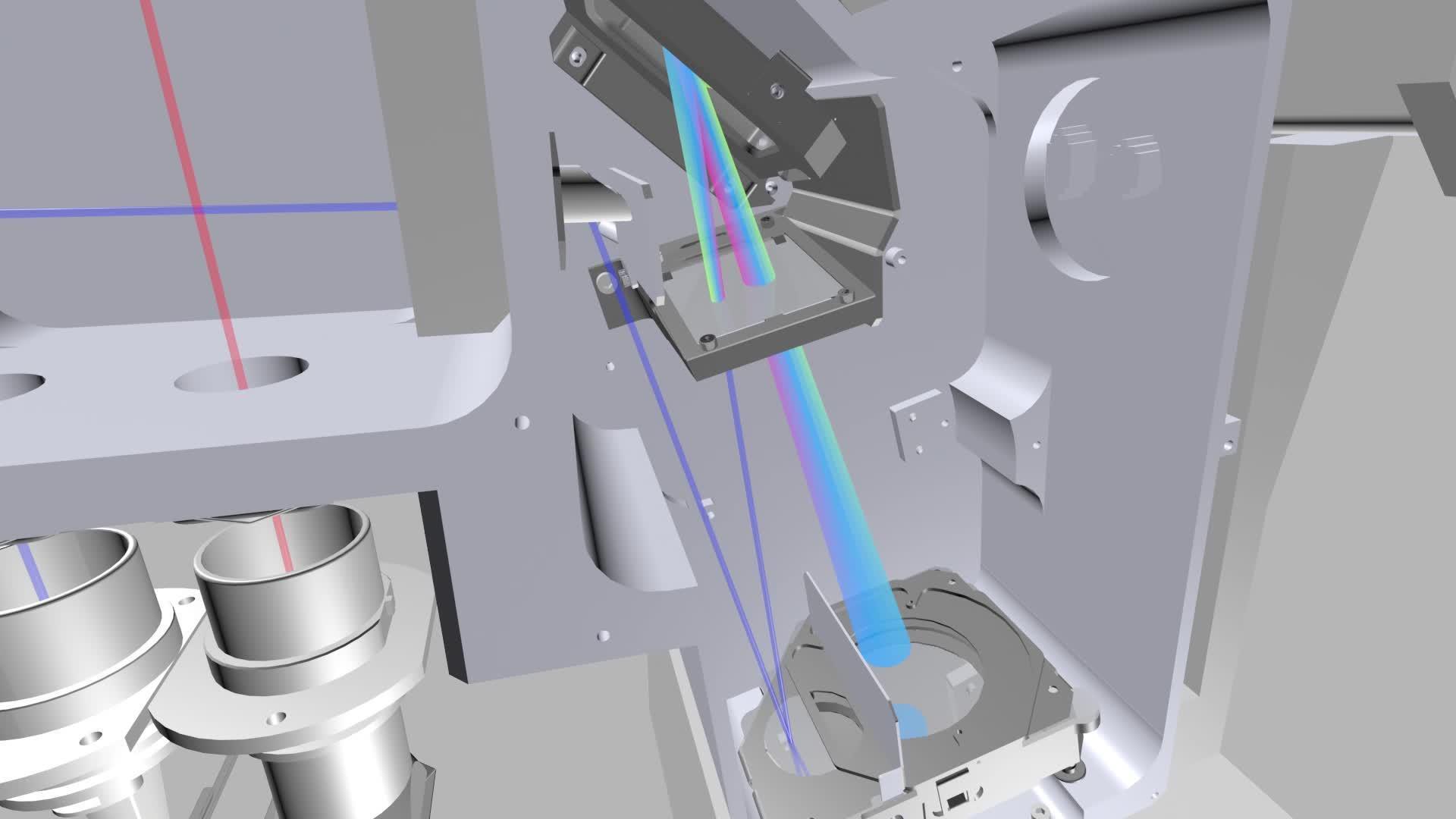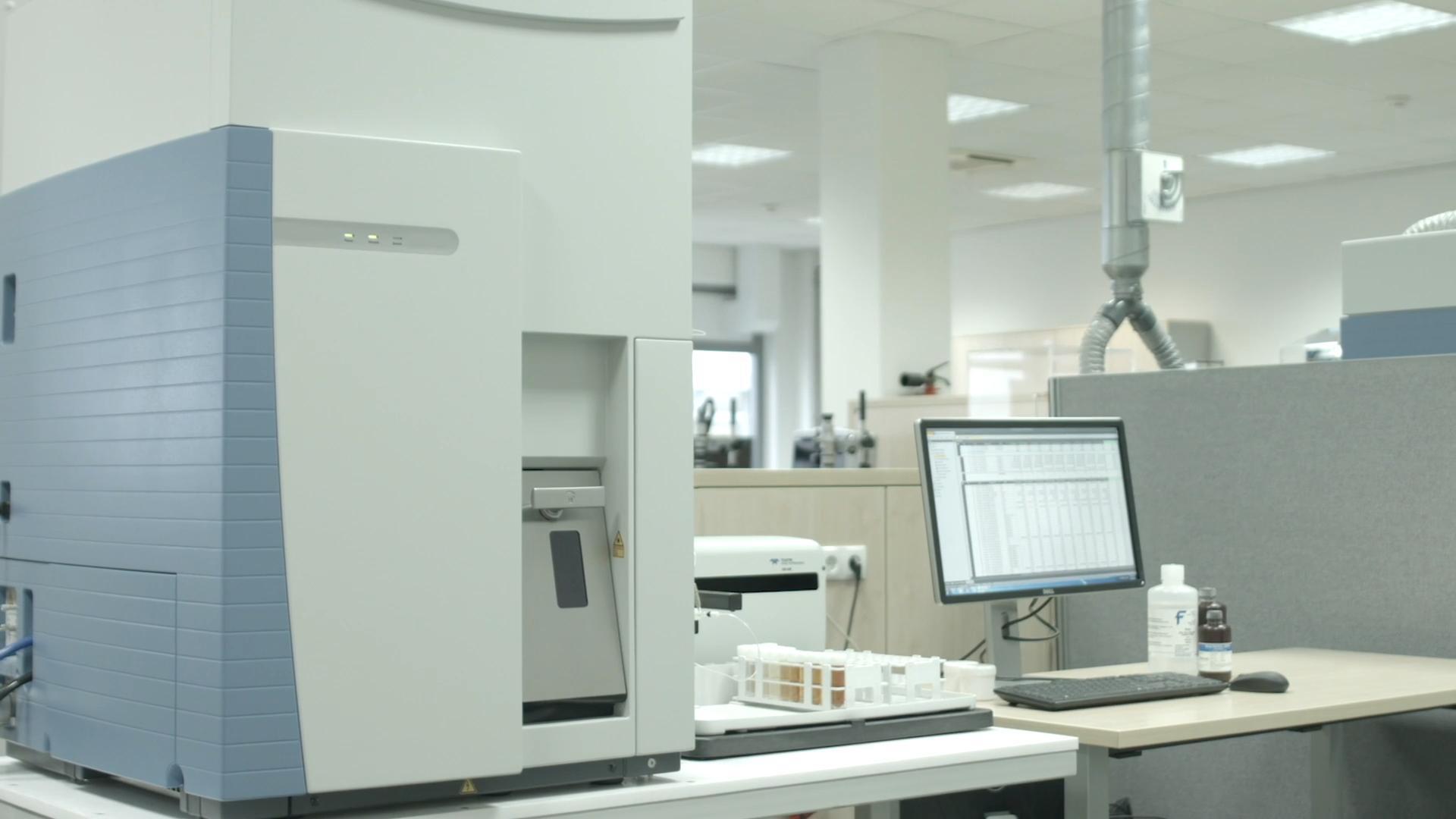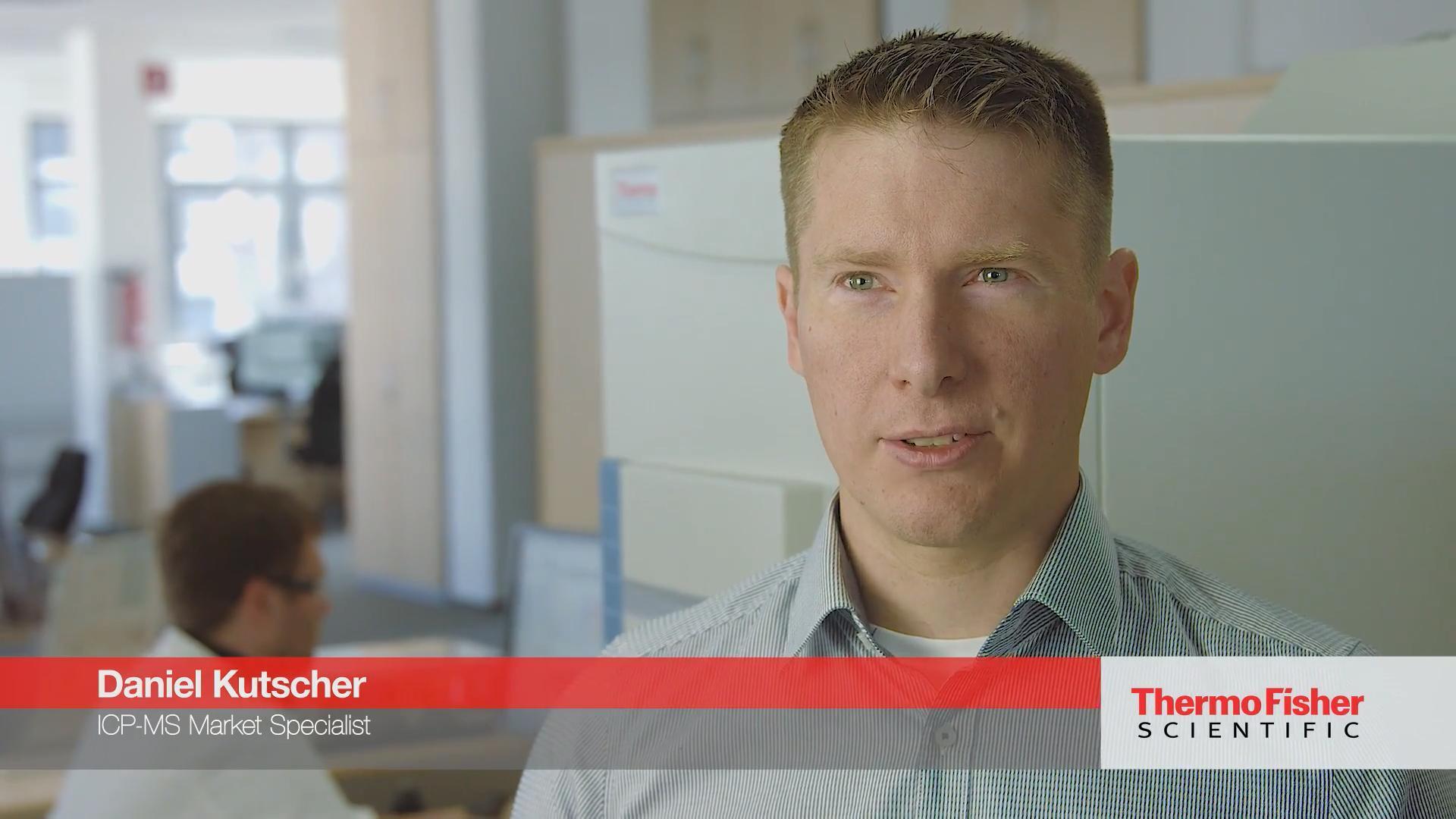Search Thermo Fisher Scientific
Metal Contaminants

Accelerate trace elemental metal analysis
Metals, especially toxic heavy metals, can contaminate our air, water, and soil and damage public health. We can help you comply with regulations and ensure our drinking water is free from toxic heavy metals, as well as provide metal analysis solutions for product development, quality control, corrosion control, and other applications. Tap into our expertise and extensive solutions that enable accurate, precise, high-throughput analysis of trace metals in a variety of sample types at very low concentrations, even in the presence of matrix interference.
On this page
We offer a variety of workflows for performing cost-effective, robust and reproducible detection, identification, and analysis of trace metals in water, soil, wastewater, and other sample types.
Fast and robust assessment of water quality using ICP-OES
Perform water analysis according to the requirements and guidelines described in the DIN EN ISO 11885:2009 method using the Thermo Scientific iCAP PRO Series ICP-OES. This study describes a fast, highly sensitive, reliable and robust analysis of various types of water samples using three different iCAP PRO XP ICP-OES Duo instruments in two different laboratories. It demonstrates the excellent data reproducibility, reliability, and robustness of these instruments. All three instruments were found to perform comparably in terms of signal stability and reproducibility over a typical working day.

Long-term experiments demonstrating recoveries of target elements in the QC standard AQO-128-151, 1,000x diluted, data obtained on three distinct iCAP PRO XP ICP-OES Duo systems. The dashed line represents the maximum allowed recovery interval (± 20%) as specified in the DIN EN ISO 11885:2009 method. Additional experiments using the USN (panel C) were run in the customer laboratory where a smaller number of measurements were made.
US EPA Method 200.7 using the Thermo Scientific iCAP PRO XPS Duo ICP-OES
Comply with and meeting the performance requirements of US EPA Method 200.7 for determining metals and trace elements a wide range of water types using the Thermo Scientific iCAP PRO XPS Duo ICP-OES. In this study, the iCAP PRO XPS Duo was used to follow the stringent analytical quality control requirements of the method. These requirements were easily implemented in the LabBook by the built-in QC checking capability of the Thermo Scientific Intelligent Scientific Data Solution (ISDS) software, a tool designed to meet the requirements of EPA methods. In this study, the full wavelength range was covered for both the axial and radial view, keeping analysis time to a minimum and reducing the need for sample reruns and dilution, thus improving overall productivity for high-throughput laboratories.

Accessible version of the table in the above image can be found in this document on Table 9.
The accurate results for the laboratory fortified matrix (LFM) samples show that quantitative recovery can be achieved in a variety of real environmental matrices. All spike recoveries were well within the allowable range of 85-115%.
Fully automated, intelligent, high-throughput elemental analysis of drinking waters using SQ-ICP-MS
Learn about a robust, fully automated, high-throughput analysis of environmental samples, according to the requirements of US EPA method 200.8 Revision 5.5. This method uses a Thermo Scientific iCAP RQ ICP-MS coupled to an intelligent autodilution system, which automates much of the sample preparation and data review. It performs automatic re-runs of samples that do not meet predefined limits, thus significantly decreasing the cost and time to reportable results. The entire analysis (encompassing sample dilution, calibration and measurement) can be run with minimal manual intervention.

Analyte concentration re-analyzed by intelligent autodilution. Original sample (left), reanalyzed analyte with dilution factor 2.165 (right).
More than 320 tap water samples were analyzed according to method EPA 200.8. The average analysis time was 66 s per sample for analysis of the 21 elements listed in EPA method 200.8, plus 6 different internal standards, leading to a total of 48 individual isotopes read out per sample.

Internal standard response of running tap water samples and QCs showing recoveries well within the 60 – 125% range specified in EPA Method 200.8.
US EPA SW-846 Method 6010D using the Thermo Scientific iCAP 7400 ICP-OES Duo
Simplify and shorten analysis time per sample while maintaining compliance and exceeding the requirements of US EPA Method 6010D with ICP-OES. This study demonstrates the performance of the Thermo Scientific iCAP 7400 ICP-OES Duo for the analysis of environmental samples. The instrument achieves short analysis times while exceeding the requirements of the protocol. Its high-resolution optical system minimized spectral interferences and reduces stray light. Additionally, the advanced Charged Injection Device (CID) detector results in higher sensitivity and lower noise, which produces a high signal-to-background ratio. The simplified workflows of the Thermo Scientific Qtegra ISDS Software enable easy adherence to complex procedures using the automatic interference correction and quality control protocols. Using the method described, the time taken for each sample analysis was 2 minutes 35 seconds. This short analysis time leads to a low quantity of waste and low consumable requirements, minimizing both the cost of analysis and its environmental impact.

Accessible version of the table in the above image can be found in this document on Table 7.
Method validation check samples and recoveries. Method performance was verified by analyzing two samples, a soil certified reference material (CRM) (#SQC001, lot 017309, RTC, Laramie, WY, USA) and a locally collected soil sample spiked with the equivalent of 100 mg·kg-1 for each of the trace analytes and 1000 mg·kg-1 for the major elements.
Direct analysis of environmental samples using ICP-MS with argon gas dilution (AGD)
Discover a method to meet the challenge of analyzing high-matrix samples for trace elements using an ICP-MS system equipped with argon gas dilution (AGD) for routine analysis of ultratrace multi-elements in complex samples. This study demonstrates the performance of a Thermo Scientific iCAP RQ ICP-MS with AGD for direct, high-throughput analysis of trace elements in sea water, wastewater and drinking water. Spectral interferences were eliminated using kinetic energy discrimination (KED) with pure helium as the collision gas. Total run time per sample was just 2 min 10 s, allowing for fully quantitative measurement of 14 elements, including sample uptake and washout, enabling a significant boost in laboratory throughput. Comprehensive, ultratrace multi-element analysis, including beryllium, was achieve without sacrificing sensitivity or robustness of the system.

Accessible version of the table in the above image can be found in this document on Table 5.
Resulting detection limits (LOD) and Background Equivalent Concentration (BEC). As can be seen, excellent LODs are achievable for a range of analytes measured by this method despite the impact on sensitivity caused by using AGD. LODs were calculated as 3x standard deviation of the calibration blank. Results for the CASS-5 sea water and drinking water samples. Analytes concentration are reported as μg·L-1.
Integration of rare earth elements (REEs) into a novel ICP-MS method for environmental analysis
Screen for rare earth elements in a variety of environmental samples using a single measurement mode. This study describes how interference-free, low-level analysis of REEs can be integrated into a fast, sensitive, and robust ICP-MS method for the analysis of different water samples (e.g., drinking and surface waters). The analytical method was tested using water samples collected locally, as well as applicable certified reference materials (CRMs). It demonstrates that the Thermo Scientific iCAP TQe ICP-MS, in combination with Thermo Scientific Qtegra ISDS Software, can successfully analyze 35 ultra-trace REEs in a variety of environmental and geological samples following a simple sample preparation process, making it ideal for laboratories analyzing high volumes of samples per day.

Response of the internal standards assessed over a period of ~10 hours of uninterrupted acquisition of 197 samples. All internal standards showed excellent recovery (within approximately 70% to 110%) over the entire runtime of the batch, demonstrating robust analytical performance.
Speciation IC-ICP-MS applications summary
Learn how to use ion chromatography to separate different ionic species elements, such as chromium and mercury, coupled with ICP-MS for quantification.
Environmental and emerging contaminant methods
Download a comprehensive collection of environmental analysis methods that help take you from sample receipt to regulatory reporting.
Thermo Scientific AppsLab Library of Analytical Applications
Search online by compound, technology, or market specialty for a variety of quick start analytical methods featuring Thermo Scientific products and workflows.
Which technology is right for your metal contaminant analysis?
We offer versatile capabilities to overcome any challenge in environmental metal contaminant analysis. Various metal analysis applications may require different instrumentation depending on particular regulations, concentration ranges, or detection limits.
- AA and GFAA are economical instrument options for the analysis of a few elements.
- ICP-OES and ICP-MS are ideal for high-throughput multi-element analysis.
- ICP-OES is suitable for tough matrices because of its tolerance for high total dissolved solids (up to 30%).
- ICP-MS enables lower detection limits to parts-per-trillion and the increased accuracy afforded by collision cell technology, which removes polyatomic interferences.
Choose the right system for your drinking water contaminant analysis
Choose the right ICP-MS system for your laboratory
Trace elemental analysis videos
Software for your trace metal contaminant analysis
The intuitive, user-friendly Thermo Scientific Qtegra Intelligent Scientific Data Solution (ISDS) Software is designed to simplify your workflows and maximize efficiency. Its shared software approach provides control and data processing for a range of elemental and isotopic analysis technologies including: ICP-OES, ICP-MS, noble gas mass spectrometry, and isotope ratio infrared spectrometry (IRIS).

Solutions for environmental contaminants by sample matrix
Related learning centers
Environmental contract testing lab integrated partnership
Learn how your laboratory can partner with Thermo Fisher Scientific to help you overcome barriers to your lab's success.













